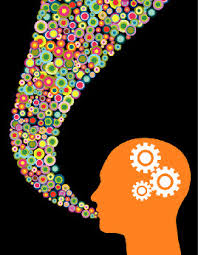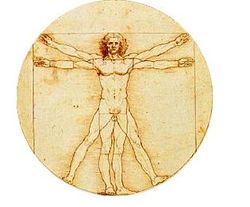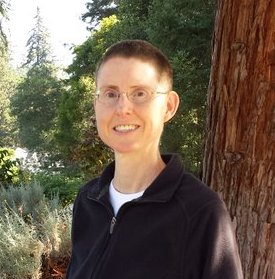
When I first began doing equanimity practice, an image spontaneously arose. I saw a person standing on the bow of a ship, but it was more like the transparent outline of a person. And then a large wave would rise above the bow – and pass right through as it washed onto the deck.
Over time, I have come to understand this image more fully. It is not about not feeling the wave – the transparency of the person does not indicate that they are insensate. Rather, the aim is to experience the wave fully by allowing all of it to penetrate awareness. Any solidity in the person blocks or distorts the complete experience.
This is basically the relationship we cultivate to experience. Waves can arise and move as needed without obstruction or distortion. Can you sense the peace in this stance? Even if the ocean is violently stormy, it does no damage because that energy passes right through. We might say it passes through the mind, but more accurately, the storm is also the mind.
I hear many questions beginning with the phrase, “What do I do about…” or, more subtly, “How can I work with….” Usually the thing to be “worked with” is some unpleasant emotion or mental state. Often what people mean is, “How can I get this to go away? How can I stop having this mindstate?”
Try shifting your viewpoint to the image of the wave passing through a transparent figure. In the end, you will be doing nothing, not trying to “work with” the wave. The very “working with” presents an obstacle in its path – resulting in a partial, manipulated experience of the wave. Mostly, the obstacles are stories, ideas, views, and interpretations that we impose without noticing. We may want to work with anger because we believe its story, because we fear it, or because we think meditation is the place to solve problems in our life. In meditation, anger is just anger – or more precisely, it is a cluster of sensations and mental states that we are invited to experience without resistance.
Now, non-resistance is the result. (First check if you are convinced that this is a worthy end; some parts of your mind may not be). But what are practices that help bring it about? There are indeed certain ways of working with difficult mindstates so that they are not overwhelming, such as applying metta/goodwill as an “antidote” to strong feelings of anger or fear. Or, in the case of physical states, diverting attention to a non-painful part of the body if pain becomes too intense. You may not be able to take in the fullness of the experience right now, in which case it is skillful to turn away. There are also methods that concurrently invoke investigation, such as the “RAIN” process devised by Michele McDonald and further developed by Tara Brach. These can be helpful methods.
In this article, I am highlighting the fundamental mental cultivation shared by all these methods: Developing enough capacity of attention, or strength of mindfulness, to simply allow the full experience of whatever is arising, whether it is a ripple or a tidal wave. Developing capacity is about stabilizing attention – the basic, unexotic practice of nondistraction. Not allowing the mind to get sucked into discursive thought, entranced by its own commentary, or overwhelmed by physical/mental feelings because of applying meaning or story to them. Don’t worry about perfection in this; that is just another idea.
Not that this is easy.
From Loreena McKennitt’s song Skellig:
Many a year was I
Perched out upon the sea
The waves would wash my tears,
The wind, my memory
I'd hear the ocean breathe
Exhale upon the shore
I knew the tempest's blood
Its wrath I would endure
Grounding in the body is the best method I have found to gain strength in attention. Just sit and sense the body – all the pulsing, vibrations, heat, thrumming, solidity, softness, sharpness, all of it. Forget the story or even the emotion. [There are also techniques from other traditions that use devotional energy to increase the capacity of attention].
Equanimity is considered a great blessing of practice. A mind that is stable and transparent even amidst the waves is a mind that is poised to know deeply how this life works, and to let go.
Over time, I have come to understand this image more fully. It is not about not feeling the wave – the transparency of the person does not indicate that they are insensate. Rather, the aim is to experience the wave fully by allowing all of it to penetrate awareness. Any solidity in the person blocks or distorts the complete experience.
This is basically the relationship we cultivate to experience. Waves can arise and move as needed without obstruction or distortion. Can you sense the peace in this stance? Even if the ocean is violently stormy, it does no damage because that energy passes right through. We might say it passes through the mind, but more accurately, the storm is also the mind.
I hear many questions beginning with the phrase, “What do I do about…” or, more subtly, “How can I work with….” Usually the thing to be “worked with” is some unpleasant emotion or mental state. Often what people mean is, “How can I get this to go away? How can I stop having this mindstate?”
Try shifting your viewpoint to the image of the wave passing through a transparent figure. In the end, you will be doing nothing, not trying to “work with” the wave. The very “working with” presents an obstacle in its path – resulting in a partial, manipulated experience of the wave. Mostly, the obstacles are stories, ideas, views, and interpretations that we impose without noticing. We may want to work with anger because we believe its story, because we fear it, or because we think meditation is the place to solve problems in our life. In meditation, anger is just anger – or more precisely, it is a cluster of sensations and mental states that we are invited to experience without resistance.
Now, non-resistance is the result. (First check if you are convinced that this is a worthy end; some parts of your mind may not be). But what are practices that help bring it about? There are indeed certain ways of working with difficult mindstates so that they are not overwhelming, such as applying metta/goodwill as an “antidote” to strong feelings of anger or fear. Or, in the case of physical states, diverting attention to a non-painful part of the body if pain becomes too intense. You may not be able to take in the fullness of the experience right now, in which case it is skillful to turn away. There are also methods that concurrently invoke investigation, such as the “RAIN” process devised by Michele McDonald and further developed by Tara Brach. These can be helpful methods.
In this article, I am highlighting the fundamental mental cultivation shared by all these methods: Developing enough capacity of attention, or strength of mindfulness, to simply allow the full experience of whatever is arising, whether it is a ripple or a tidal wave. Developing capacity is about stabilizing attention – the basic, unexotic practice of nondistraction. Not allowing the mind to get sucked into discursive thought, entranced by its own commentary, or overwhelmed by physical/mental feelings because of applying meaning or story to them. Don’t worry about perfection in this; that is just another idea.
Not that this is easy.
From Loreena McKennitt’s song Skellig:
Many a year was I
Perched out upon the sea
The waves would wash my tears,
The wind, my memory
I'd hear the ocean breathe
Exhale upon the shore
I knew the tempest's blood
Its wrath I would endure
Grounding in the body is the best method I have found to gain strength in attention. Just sit and sense the body – all the pulsing, vibrations, heat, thrumming, solidity, softness, sharpness, all of it. Forget the story or even the emotion. [There are also techniques from other traditions that use devotional energy to increase the capacity of attention].
Equanimity is considered a great blessing of practice. A mind that is stable and transparent even amidst the waves is a mind that is poised to know deeply how this life works, and to let go.







 RSS Feed
RSS Feed